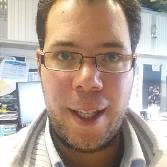International Journal of Engineering and Manufacturing (IJEM)
IJEM Vol. 7, No. 4, 8 Jul. 2017
Cover page and Table of Contents: PDF (size: 935KB)
Enhancing Noise Attenuation in Exhaust Mufflers on Response to Baffle Configuration
Full Text (PDF, 935KB), PP.12-25
Views: 0 Downloads: 0
Author(s)
Index Terms
Baffles, Exhaut systems, Transmission Loss
Abstract
Using baffles in exhaust mufflers is known to improve transmission loss and reduce the noise emitted to the environment. This paper postulates that baffle cut ratio affects the muffler performance in the same effect as a shell-and-tube heat exchanger, consequently the baffle cut ratio should affect the muffler performance. This study presents a parametric study on the effect of baffle configuration on predicted transmission loss and pressure drop. The effect of baffle cut ratio, baffle spacing, number of baffle holes, and hole pattern distribution on transmission loss was investigated. Results showed that reducing the baffle cut ratio increased the transmission loss at intermediate frequencies by up to 45% while decreasing the spacing between muffler plates improved the muffler transmission loss by 40%. The assessment of the baffle effect on flow using a thermal baffle approach model indicated a sudden drop in fluid temperature in axial flow direction by 15% as the baffle cut ratio changed from 75% to 25. To the best of authors knowledge, the effect of baffle cut ratio configuration on acoustic response and back pressure has not been previously reported or investigated.
Cite This Paper
Ahmed Elsayed, Christophe Bastien, Humberto Medina, Steve Jones, Hassan Kassem,"Enhancing Noise Attenuation in Exhaust Mufflers on Response to Baffle Configuration", International Journal of Engineering and Manufacturing(IJEM), Vol.7, No.4, pp.12-25, 2017. DOI: 10.5815/ijem.2017.04.02
Reference
[1]Tao, Z and Seybert, AF."A Review of Current Techniques for Measuring Muffler Transmission Loss" SAE 2003-01-1653, 2003.
[2]Zhou, Z and Copiello D. "Simulation of Exhaust Line Noise Using FEM and TMM", Sound & Vibration, Vol. 47 No. 9, pp.10-13, 2013.
[3]Parlar Z, Ari Ş, Yilmaz R, Özdemir E, and Kahraman A."Acoustic and Flow Field Analysis of a Perforated Muffler Design", International Journal of Mechanical, Aerospace, Industrial, Mechatronic and Manufacturing Engineering; Vol. 7, No.3, pp. 447-451, 2013.
[4]Coustyx software. "Muffler transmission loss – double expansion chamber", 2016.
[5]Gupta AK." Design validation of the existing muffler's transmission loss results with acoustic simulation tool', International journal of research science & management, Vol. 3, No.4:pp. 35-40, 2016a.
[6]Gupta AK. "Comparison of Noise Attenuation Level by Convergent and Divergent Cylindrical Duct with Space Constraints", International Journal of Scientific Research in Science, Engineering and Technology, Vol. 2, No.(2):pp. 778-781, 2016b.
[7]Gupta AK."Simulation of sound transmission loss for rectangular cross section muffler with different aspect ratio in same space", International Journal of Engineering Research, Vol.4, No.2, 2016c.
[8]Mundhe, V and Deore E." Design and optimization of perforated muffler in an automobile exhaust system", International journal of applied research, Vol. 1,No.(8),pp. 390-395, 2015.
[9]Done, V Venkatesham, B, Tamma, B Soni, K, Dey, S Angadi, SVishal GP." Muffler Design for a Refrigerator Compressor". Paper Presented at International Compressor Engineering Conference pp. 1146:1-7, 2014.
[10]Gupta AK. "Observation for transmission loss by applying multiple baffle plates on single expansion chamber: a simulation approach", International Journal of Engineering Research and Modern Education, pp. 2455 – 4200, 2016d.
[11]Roy, T., "Muffler characterization with implementation of the finite element method and experimental techniques". Michigan Technological University, Msc Thesis. 2011.
[12]Horoub, M. "Acoustic Noise control using multiple expansion chambers", King Fahd University of petroleum and minerals.2011.
[13]Middelberg, JM Barber, TJ Leong, SS, Byrne, KP Leonardi, E.," Computational fluid dynamics analysis of the acoustic performance of various simple expansion chamber mufflers". Proceeding of Acoustics.2004.
[14]Ghude, N Malve, A Kotian, K Thawani, M Rukhande, S., "Investigation of Muffler for Noise Reduction", International Journal on Recent and Innovation Trends in Computing and Communication, Vol. 4, No. 4, pp. 35 - 38, 2016.
[15]Gupta, AK Tiwari, A., "Measurement of Sound Transmission Loss on Straight and Zigzag Perforated Concentric Tube Muffler with Constant Porosity", International Journal on Emerging Technologies, Vol. 6, No.2, pp. 35-40, 2015
[16]Jebasinski R.," Calculation of the Tail-pipe Noise of exhaust systems with Wave", Ricardo-wave software, 1996.
[17]Jebasinski R., "Absorption mufflers in exhaust systems", Ricardo-wave software, 2002.
[18]Cheung R. "Exhaust System Structural Vibration & Muffler Shell Noise Prediction due to Gas Pulsations in a 2.0l 4Cyl DI Diesel Engine", Jaguar Land Rover RS EUC, Prague. 2015.
[19]STAR-CCM+ software.
[20]Cable, M., "An Evaluation of Turbulence Models for the Numerical Study of Forced and Natural Convective Flow in Atria", Master of Science, Queen's University, Canada. 2009.
[21]Montenegro, G, Onorati, A and Torre, AD. "The prediction of silencer acoustical performances by 1D, 1D–3D and quasi-3D non-linear approaches", Computers & Fluids, Vol. 71, pp. 208–223, 2013.
[22]Siano D. "Three-dimensional/one-dimensional numerical correlation study of a three-pass perforated tube", Simulation Modelling Practice and Theory, Vol. 19, pp. 1143–1153, 2011.



